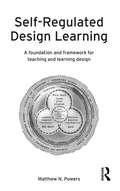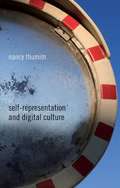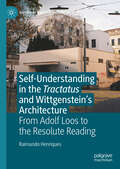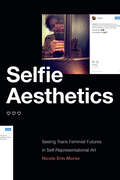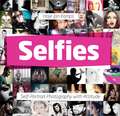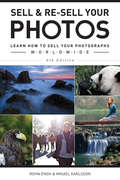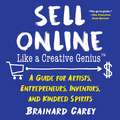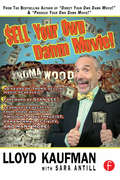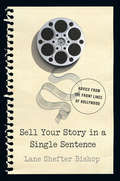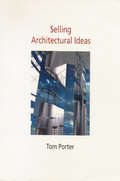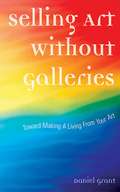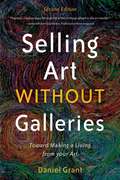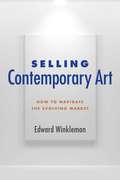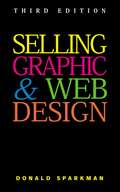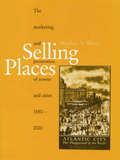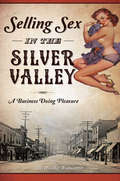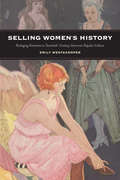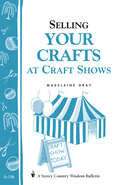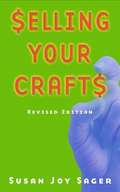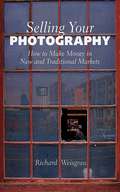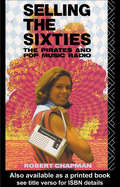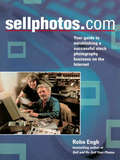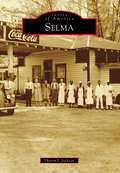- Table View
- List View
Self-Regulated Design Learning: A Foundation and Framework for Teaching and Learning Design
by Matthew N. PowersSelf-Regulated Design Learning: A Foundation and Framework for Teaching and Learning Design reframes how educators in architecture, landscape architecture, and other design disciplines think about teaching and learning design. The book weaves together concepts of constructivism, social cognitive theory, and self-regulated learning into a solid theoretical foundation for innovative teaching that emphasizes meaning, memory, problem solving, and mastery. The central goal of self-regulated design learning is making design learnable so that students are encouraged to become active, engaged participants in the design learning process. Key features of the book include: examining the issues, values, and challenges of teaching and learning in design, exploring select educational theories and concepts relevant to design pedagogy, illustrating the pivotal relationships between design learning and self-regulation, and discussing pedagogic techniques that support self-regulated design learning and lead to greater student achievement and performance. Self-Regulated Design Learning: A Foundation and Framework for Teaching and Learning Design provides numerous examples and applications to help design educators understand how to implement the self-regulated design learning methodology in their studios. Through this book, design educators will discover new ways of encouraging meaningful design learning through an advanced approach that is empowering, inspiring, and vital.
Self-Representation and Digital Culture
by Nancy ThumimTaking a close look at ordinary people 'telling their own story', Thumim explores self-representations in contemporary digital culture in settings as diverse as reality TV, online storytelling, and oral histories displayed in museums. Now available in paperback, Self-Representation and Digital Culture addresses the institutional contexts of production, technology and form of the texts, and the point of view of those who represent themselves. This highly original research examines how contradictory and widely different politics inform and shape examples of 'speaking for oneself'. In the book, Thumim argues that analysis and theorization of the activity of self-representation is vital for media, communication and cultural studies at a time when examples, of what should now be understood as a genre, both surround us and appear, at first glance, to all be alike.
Self-build: How to design and build your own home
by Julian OwenIf you’ve ever dreamt of designing and building your own home, this book is for you. Becoming a ‘self-builder’ doesn’t necessarily mean learning to build a house physically from scratch. Anyone can be a self-builder – you can do so without ever having to lay a brick yourself. Self-built homes can also be more individual, better designed and more economical than buying from a developer. This book is designed for homeowners and self-builders, whether aspiring or on the brink of starting a project. It provides a jargon-free, step-by-step guide to the process of designing and building your own home, distilling all of the practical information needed to make your dream house a reality. Carefully crafted to offer friendly, easy-to-understand practical guidance and packed with watch points, hints and tips, it also highlights the potential pitfalls and suggests ways of avoiding them. Including indications of costs and timescales, Self-build demystifies the process of budgeting, finding a site, gaining planning permission, designing your home and all of the surrounding issues to do with sustainability, planning, regulations, procurement and the use of building contracts. Beautifully illustrated with over 230-colour photos, diagrams and plans, it provides all the inspiration and ideas you need to bring your own project to life. Featured houses include: Amphibious House by Baca Architects Corten Courtyard House by Barefoot Architects Haringey Brick House by Satish Jassal Architects Shawm House by Mawson Kerr Architects Sussex House by Wilkinson King Architects The Pocket House by Tikari Works Architects.
Self-understanding in the Tractatus and Wittgenstein’s Architecture: From Adolf Loos to the Resolute Reading (History of Analytic Philosophy)
by Raimundo HenriquesBetween 1926 and 1928, the philosopher Ludwig Wittgenstein designed a house for his sister in Vienna (the Kundmanngasse). This book aims to clarify the relation between that house and Wittgenstein’s early philosophy. The starting point of its main argument is a remark from Diktat für Schlick (c. 1932-33) in which Wittgenstein proposes an analogy between ornaments and nonsensical sentences. The attempt to extract from it an account of the relation between the Kundmanngasse and the Tractatus Logico-Philosophicus (1921) leads to the writings of Adolf Loos (whose influence Wittgenstein recognized). The discussion of Loos’s writings suggests that the analogy should be understood, not as one between actual ornaments and nonsensical sentences, but as one between Loos’s and Wittgenstein’s uses of these notions. So understood, it favors the (so-called) resolute reading of the Tractatus and reveals that both Wittgenstein’s use of ‘nonsense’ and Loos’s use of ‘ornaments’ are means to the end of promoting self‑understanding. The book concludes that both the Kundmanngasse and the Tractatus are results of Wittgenstein’s efforts at this kind of self‑understanding. These can be construed as ways of acknowledging our humanity, which in turn can be seen as a unifying element of Wittgenstein’s philosophy.
Selfie Aesthetics: Seeing Trans Feminist Futures in Self-Representational Art
by Nicole Erin MorseIn Selfie Aesthetics Nicole Erin Morse examines how trans feminine artists use selfies and self-representational art to explore transition, selfhood, and relationality. Morse contends that rather than being understood as shallow emblems of a narcissistic age, selfies can produce politically meaningful encounters between creators and viewers. Through close readings of selfies and other digital artworks by trans feminist artists, Morse details a set of formal strategies they call selfie aesthetics: doubling, improvisation, seriality, and nonlinear temporality. Morse traces these strategies in the work of Zackary Drucker, Vivek Shraya, Tourmaline, Alok Vaid-Menon, Zinnia Jones, and Natalie Wynn, showing how these artists present improvisational identities and new modes of performative resistance by conveying the materialities of trans life. Morse shows how the interaction between selfie creators and viewers constructs collective modes of being and belonging in ways that envision trans feminist futures. By demonstrating the aesthetic depth and political potential of selfie creation, distribution, and reception, Morse deepens understandings of gender performativity and trans experience.
Selfies: Self-Portrait Photography with Attitude
by Haje Jan KampsSelfies by Haje Jan Kamps is ultimately a celebration of the culture of social networking, the world where you aren't anybody until you have a photo of yourself, and what that photo says is critically important. <P><P>Whether you're an artist soul, or you want to show your smoldering hot side, this cheeky, sexy, and loud book will show you how to depict these parts of you through photography.With pictures and stories from the best of the best, gather tips for photographing yourself and learn how to take selfies.Learn how to portray innocence and drama, tell stories with your photo, use costumes and props during your shoot, shoot on location or in action, and much more. <P>Gather the photography skills you need to capture the look you want, and learn how to edit your photos after the shoot to add layers, highlights, and more.In Selfies you'll find:11 chapters filled with photography editing tips to help ease clarify the process of taking selfiesAdvice for using mobile apps utilizing other techniques to perfect your picturesA plethora of visual examples to clarify techniques ideas presented in the book
Sell & Re-Sell Your Photos: Learn How to Sell Your Photographs Worldwide
by Rohn Engh Mikael KarlssonSell your photos again and again! Live anywhere. Pick your hours. Be your own boss. Earn more money. See your pictures in print. Discover the freedom of a profitable photo business by learning the secrets behind making and selling editorial stock photography. For more than three decades, industry classic Sell & Re-Sell Your Photos has been giving new and veteran photographers the tools to sell their pictures consistently to markets they enjoy. Rohn Engh's master text, with updates from independent photographer Mikael Karlsson, outlines the time-tested formula for successfully marketing your work to publishers world-wide. This completely revised and expanded 6th edition features up-to-date advice, brand new photos and charts and tables to help you achieve your goals. Learn how to:Create enduring images--the ones photo buyers always needPrice your photos like a professionalFind your niche and corner that marketTake and market your work with modern technologyConfidently submit to agencies and publishersDigitally store your archiveProtect yourself and your photos with basic copyright laws and regulationsIncludes a detailed five-week action plan to get you organized and sellingMaster the stock photography market: Take pictures today that you can sell for many tomorrows to come!
Sell Online Like a Creative Genius: A Guide for Artists, Entrepreneurs, Inventors, and Kindred Spirits (Like a Creative Genius #1)
by Brainard CareyHow to sell art or anything else online without leaving your home. Whether you’re selling original artwork, jewelry, or a unique product, this is the book for you. Brainard Carey offers advice with solid examples of how building an online business is something every creative person can pursue. Carey draws from his extensive experience and interviews with others to show artists and creative people how to sell their work independently and efficiently. Readers will learn how to establish an online store, develop a presence, promote their goods, and reach customers. Chapter topics include: Designing a website or profile on an existing site Effective marketing strategies Creative ways to advertise your product Building your social media following Finding new customers Real examples of artists and entrepreneurs who succeeded in selling their work online And much more With chapters divided between practical how-tos and case studies, Sell Online Like a Creative Genius™, offers readers both instructive and demonstrative lessons in making their small online business a reality. Everyone can do it with the right tools, and Carey offers an insider’s guide to an otherwise daunting process.
Sell Your Own Damn Movie!
by Lloyd KaufmanThis is the 3rd volume in Mr. Kaufman's hilarious, how-to series for hard-working self-starters and hard-laughing, cheeky filmmakers. "Sell Your Own Damn Movie!" covers everything you need to do to get your finished film seen by festival-goers, movie-goers, DVD-buyers and web-goers around the world. You will be lead through a primer on the history of film distribution to a discussion of the many ways you can get your film out there, either through a reputable distributor or all on your own. From the realities of distribution, to utilizing the internet to self-distribution, Mr. Kaufman tells you in his habitually lucid and off-the-wall way. Inserts include interviews and pointers from veteran distribution pros as well as directors and producers who share their own front-line stories. Mr. Kaufman recounts his own raucous stories of marketing pleasures and nightmares from 35 years of movie-making experience, creating a uniquely useful and entertaining read. Or, in Lloyd's inimitable words. The most asked question at my worldwide popular, legendary, renowned master class is, "How do I get my no-budget, zombie giraffe flick distributed?†Well, have no fear, because the 3rd volume in Uncle Lloydie's how-to series of go-to guides for filmmakers reveals the secrets, methods and tricks (short of prostituting yourself and selling bodily organs) to getting your film distributed. With Troma, our legendary 35-year-old independent studio, Michael Herz and I have developed a low cost, high-impact method for low-budget film distribution, which has lead to a high-profile brand name and a catalog of over 800 titles! Now you can learn to get you movie out there, too. I will be your busty tour guide, sharing with you my hard-earned cinematic distribution know-how! -LEARN! How I achieved box office success with my fowl chicken zombie masterpiece Poultrygeist, and everyone's favorite super-human hero from New Jersey, the Toxic Avenger, for practically no money! -SMELL! The sewer that is mainstream distribution as I drag you through the muck, be-farting upon you the real scoop behind "indie†and mainstream distribution deals. -MASTICATE! (No, not that kind of masticating) On the knowledge of DVD distribution as I es-chew the fat and get to the skinny of Do-It-Yourself DVD distribution. I will teach you the fundamentals of having a good website (like www.Troma.com) to boost your sales! -FEAST! On my golden brown chicken puns as I cleverly cluck your brain out with the irrefutable knowledge of how I sold over 10,000 units of the 3-disc limited-edition Poultrygeist DVD in a matter of months! YES! If you have any doubt that I will not be able turn your no-budget zombie giraffe opus into box-office gold, then put down this book proposal! No wait, pick it back up, pick it back up! This is a recession damnit, Troma needs all the money we can, er... I need to educate you filmmakers looking for distribution gold (brown)! After reading my book, any damn filmmaker will be able to "Sell Your Own Damn Movie!†Featuring expert advice from those who have successfully sold their films: * David Cronenberg (Director of The Fly, Crash, A History of Violence)* Oren Peli (Director/Producer of Paranormal Activity)* Ted Hope (Producer of Crouching Tiger, Hidden Dragon, In the Bedroom, Happiness)* Brad Kembel (Executive Vice President of International Distribution at Summit Films; Twilight)* James Gunn (Writer/Director of Super, Dawn of the Dead, Slither)* Jonathan Wolf (Executive Vice President, Independent Film and Television Alliance and Managing Director, American Film Market)... and many more who have sold their own damn movies!
Sell Your Story in A Single Sentence: Advice from the Front Lines of Hollywood
by Lane Shefter BishopEvery writing project has one thing in common--they all start with a single sentence. Writers constantly struggle to answer this question: What is your story about? Finally, a guide by a leading Hollywood insider who actually knows the answer--and now she shows you how to do it yourself! Lane Shefter Bishop, CEO of Vast Entertainment, explains the key to selling your screenplay, novel, or script. This comprehensive guide to opening career doors is the first of its kind, highlighting the tips and techniques for making your story stand out. From tips on character development to hints on points to avoid, Bishop covers all your bases when selling your story.
Selling Architectural Ideas
by Tom PorterAs 'visual animals' architects continue to live and work in a pictorial age in which image-making remains the central activity of environmental design. Selling Architectural Ideas explores the promotional role of architectural graphics and drawing at the point of communication, i.e. at their point of sale. By substituting the words 'communication' and 'presentation' with the word 'selling' we confront the reality of a highly competitive world in which the process of creating images for selling architectural ideas is approached as a more persuasive and, therefore, more successful design tool.
Selling Art Without Galleries: Toward Making a Living from Your Art
by Daniel GrantThe first guide to selling art independently. This comprehensive resource shows artists how to make a living from their art-without relying on galleries. Through interviews with a range of successful artists, readers will learn how to write about their own work, how to arrange and curate exhibits, how to work in nonprofit arts spaces, how to determine when and if to advertised artwork for sale, and how to exhibit in non-art spaces. Artists will also find useful information for marketing their work, including photographing and framing, selling at art fairs, getting into juried shows, and selling over the Internet. Selling Art Without Galleries empowers artists everywhere to take control over their careers and find a market for their art. Easy-to-follow, in-depth advice on the marketing of art Follow-up to The Business of Being an Artist-35,000 copies sold! Exclusive information on "thinking outside the gallery" from other artists
Selling Art without Galleries: Toward Making a Living from Your Art
by Daniel Grant“Not simply a how-to book, Selling Art without Galleries is a hands-on guidebook to daily life in the complex and sometimes murky world of the art market.” —Sculpture Magazine The days in which artists must get their work into galleries in order to gain success and recognition are long over. With that in mind, Daniel Grant gives readers advice on the multitude of options artists now have for marketing their work as well as how to sell work in a host of nontraditional venues, such as online, through open studio events, and in hospitals, restaurants, and art fairs. In this updated and revised edition, Grant provides new chapters on such topics as: Publicity and social media Public art loan programs Meeting prospective buyers at museums “Handmade” and “Made in America” Artists’ estates and private foundations The benefits of donating artwork In addition, Grant includes tips on disaster preparedness, workspaces, housing and residencies, emergency funds, and legal assistance. For any artist looking to explore success outside of a gallery, Selling Art without Galleries is a comprehensive and invaluable guide.
Selling Contemporary Art: How to Navigate the Evolving Market
by Edward WinklemanA sophisticated examination of today’s contemporary art market from an art dealer’s point of view, this new book focuses on recent changes in the quickly evolving market. With an emphasis on how the market responded to the global recession that began in 2008, gallery owner Edward Winkleman moves from an examination of the factors beyond the individual dealer’s command to those that the dealer can control. Sections cover: The rise of the art fair The rise of the mega gallery New online competition Models of post-brick-and-mortar art dealing Art dealers as art fair organizers Collaboration in a new era Coverage is also given to the specifics of contracts contemporary art dealers may need, including an examination of a variety of contracts for representation, consignment, and new forms of contemporary art. Exhibiting a wide range of interviews with international experts including dealers, collectors, art-fair directors, journalists, and online art entrepreneurs, Selling Contemporary Art is a must-read for gallery owners, dealers, and artists affected by the rapid innovations in the art-dealing industry.
Selling Graphic and Web Design
by Donald SparkmanExpert guidance on selling graphic design, in print and online. Attract today's savvy design clients! A veteran designer who turned his small business into a multimillion-dollar new-media company shares his strategies for success in this new edition of the acclaimed Selling Graphic and Web Design. Donald Sparkman's approach blurs the lines between graphic design, web design, and marketing by building strategic partnerships and thinking outside the box. No-nonsense advice for writing proposals and offering the right design solutions, plus information on providing services that fit a client's needs and budget, have made this book indispensable. Now, in this revised and expanded version, leading Internet designers share strategies on effective marketing for the web, including pricing, billing, portfolios, ethics, brand design, web content management, brand law, and much more. Trusted advice and the latest strategies combine to make Selling Graphic and Web Design a great one-stop resource for designers in every field. New edition of a classic Up-to-the-minute advice on selling to internet clients Get the top clients and keep them
Selling Places: The Marketing and Promotion of Towns and Cities 1850-2000 (Planning, History and Environment Series)
by Stephen WardSelling Places explores the fascinating development of the place marketing and promotion over the last 150 years, drawing on examples from Northern America, Britain and continental Europe. The processes involved and the promotional imagery employed are meticulously presented and richly illustrated.
Selling Sex in the Silver Valley: A Business Doing Pleasure
by Dr Heather BranstetterOnce the largest silver producer in the world, Wallace became notorious for labor uprisings, hard drinking, gambling and prostitution. As late as 1991, illegal brothels openly flourished because locals believed that sex work prevented rape and bolstered the economy, so long as it was regulated and confined to a particular area of town. The madams enjoyed unprecedented status as influential businesswomen, community leaders and philanthropists, while elsewhere a growing aversion to the sex trade drove red-light districts underground. Dr. Heather Branstetter’s research features previously unpublished archival materials and oral histories as she relates the intimate details of this unlikely story.
Selling Women's History: Packaging Feminism in Twentieth-Century American Popular Culture
by Emily WestkaemperOnly in recent decades has the American academic profession taken women's history seriously. But the very concept of women's history has a much longer past, one that's intimately entwined with the development of American advertising and consumer culture. Selling Women's History reveals how, from the 1900s to the 1970s, popular culture helped teach Americans about the accomplishments of their foremothers, promoting an awareness of women's wide-ranging capabilities. On one hand, Emily Westkaemper examines how this was a marketing ploy, as Madison Avenue co-opted women's history to sell everything from Betsy Ross Red lipstick to Virginia Slims cigarettes. But she also shows how pioneering adwomen and female historians used consumer culture to publicize histories that were ignored elsewhere. Their feminist work challenged sexist assumptions about women's subordinate roles. Assessing a dazzling array of media, including soap operas, advertisements, films, magazines, calendars, and greeting cards, Selling Women's History offers a new perspective on how early- and mid-twentieth-century women saw themselves. Rather than presuming a drought of female agency between the first and second waves of American feminism, it reveals the subtle messages about women's empowerment that flooded the marketplace.
Selling Your Crafts at Craft Shows: Storey's Country Wisdom Bulletin A-156 (Storey Country Wisdom Bulletin Ser.)
by Madelaine GraySince 1973, Storey's Country Wisdom Bulletins have offered practical, hands-on instructions designed to help readers master dozens of country living skills quickly and easily. There are now more than 170 titles in this series, and their remarkable popularity reflects the common desire of country and city dwellers alike to cultivate personal independence in everyday life.
Selling Your Crafts: Revised Edition
by Susan Joy SagerDrawing upon profiles of established artisans and the helpful insights of small-business entrepreneurs, this unique guide not only gives tactics for promoting and marketing crafts, but also provides the necessary forms for getting a business up and running. The book details how to network effectively and build a customer base, listing organizations, business associations, and crafts publications that offer further sources of information. Filled with easy-to-understand examples and sample forms and contracts, this book provides the essential tools for prospering in the crafts business, as well as the resources needed to keep savvy as business grows.
Selling Your Photography: How to Make Money in New and Traditional Markets
by Richard WeisgrauSelling Your Photography is the road map to help photographers find their way through the complexities of the marketplace and get their images published! This insider's guide examines magazines, newspapers, books, posters, greeting cards, calendars, brochures, print and Web advertisements, annual reports, and more. Chapters cover how to:· Break into diverse markets · Shoot and sell stock and assignment photography · Find advertising, corporate, editorial, and merchandise segment clients · Work with photo editors, art directors, and communication directors · Market your photography · Develop good business habits · License and price your work · Get new clients through past publication · Make additional sales with the same photographsAnyone who plans to have his or her images published will need this handy guide.
Selling the Sixties: The Pirates and Pop Music Radio
by Robert ChapmanWas it a non-stop psychedelic party or was there more to pirate radio in the sixties than hedonism and hip radicalism? From Kenny Everett's sacking to John Peel's legendary `Perfumed Garden' show, to the influence of the multi-national ad agencies, and the eventual assimilationof aspects of unofficial pop radio into Radio One, Selling the Sixties examines the boom of private broadcasting in Britain. Using two contrasting models of pop piracy, Radios Caroline and London, Robert Chapman sets pirate radio in its social and cultural context. In doing so he challenges the myths surrounding its maverick `Kings Road' image, separating populist consumerism from the economic and political machinations which were the flipside of the pirate phenomenon. Selling the Sixties includes previously unseen evidence from the pirates' archives, revealing interviews and an unrivalled selection of rare audio materials.
Sellphotos.com: Your Guide to Establishing a Successful Stock Photography Business on the Intern et
by Rohn EnghPhotography is in the midst of a revolution. Rohn Engh shows part-time and professional photographers how to compete with the big agencies by using the Internet--the new frontier of stock photography sales--and by determining how their images, both traditional and digital, are delivered and paid for. A comprehensive guide, sellphotos. com covers everything for photographers from Internet basics and the nature of the stock photography trade to building their own web sites and operating their own business. Rohn Engh is a veteran editorial stock photographer who has sold to national and worldwide markets since 1960. He is founder and publisher of PhotoStockNotes, PHOTOLETTER and PhotoDaily, market letters that post photo editor picture needs. Engh also conducts photo marketing seminars nationwide. He lives in Wisconsin.
Selma (Images of America)
by Sharon J. JacksonOn April 2, 1865, one of the last battles of the Civil War destroyed nearly three-fourths of Selma and effected tremendous change in the lives of its people. At the war's beginning, Selma became a transportation center and one of the main manufacturing centers supporting the South's war effort. Its foundries produced much-needed supplies and munitions, and its naval yard constructed Confederate warships. A century later, Selma again became the scene of a dramatic struggle when it served as the focal point of the voting-rights movement. On Sunday, March 7, 1965, approximately 600 marchers set out from Brown Chapel A.M.E. Church on US Highway 80, headed for Montgomery to petition the state legislature for reforms in the voter-registration process. They were met six blocks outside of town at the Edmund Pettus Bridge by state and local law enforcement and were turned back with Billy clubs and tear gas--the day became known as "Bloody Sunday." On March 25, after much discussion and a court injunction, some 25,000 marchers finally crossed the Edmund Pettus Bridge on their way to Montgomery.
Semantic Analysis and Understanding of Human Behavior in Video Streaming
by Vincenzo Piuri Alberto Amato Vincenzo Di LecceSemantic Analysis and Understanding of Human Behaviour in Video Streaming investigates the semantic analysis of the human behaviour captured by video streaming, and introduces both theoretical and technological points of view. Video analysis based on the semantic content is in fact still an open issue for the computer vision research community, especially when real-time analysis of complex scenes is concerned. This book explores an innovative, original approach to human behaviour analysis and understanding by using the syntactical symbolic analysis of images and video streaming described by means of strings of symbols. A symbol is associated to each area of the analyzed scene. When a moving object enters an area, the corresponding symbol is appended to the string describing the motion. This approach allows for characterizing the motion of a moving object with a word composed by symbols. By studying and classifying these words we can categorize and understand the various behaviours. The main advantage of this approach lies in the simplicity of the scene and motion descriptions so that the behaviour analysis will have limited computational complexity due to the intrinsic nature both of the representations and the related operations used to manipulate them. Besides, the structure of the representations is well suited for possible parallel processing, thus allowing for speeding up the analysis when appropriate hardware architectures are used. A new methodology for design systems for hierarchical high semantic level analysis of video streaming in narrow domains is also proposed. Guidelines to design your own system are provided in this book. Designed for practitioners, computer scientists and engineers working within the fields of human computer interaction, surveillance, image processing and computer vision, this book can also be used as secondary text book for advanced-level students in computer science and engineering.
